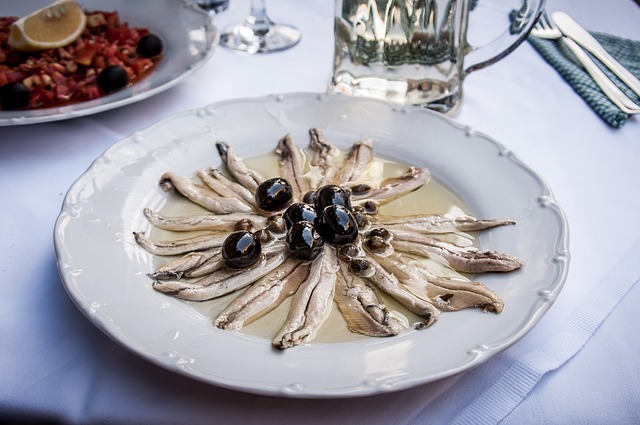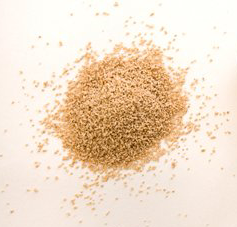Pesco-Vegan | Gluten-Free | Low-FODMAP | OMS-Friendly
Anchovies are a small fish that is most often cured, and has a strong flavour. They are used in many forms of cooking and add interesting flavours to many dishes. You can have it with garlic and olive oil on toast, or chop the anchovies into a salad, mix it into pastas, or stew it into complex dishes.
Anchovies are really oily, so go bad quickly after being caught, which is why you won’t really find a lot of fresh anchovy around most places.
Anchovies are cheap, and cooked and cured in very simple ways. They are also often confused with sardines, however these are actually two separate fish, but are used in similar ways.
How the taste works
Cured anchovies work much the same way as other cured foods like ham, fermented soy, or fermented fish paste in terms of flavour. The taste is very salty, so not much anchovy is generally used, but the flavours are delicate and rich. This is an umami underpinning flavour.
How to buy and prepare anchovies
Fresh – look for fresh, shiny anchovies sold as soon after being caught as possible – they spoil fast. Cook within hours, and keep as cold as possible (on ice is perfect). Use a dull blade to scale fresh anchovies, remove the head, clean, and usually you will fillet them by tugging the spine towards the tail.
Cured – You want these in salt rather than oil, and eat within a year, since afterwards the flesh changes texture a bit. To use, rinse off the salt and scrape away the skin with a dull butter knife. Separate the two fillets from the spine, pull away the fins and tail, then rinse and dry your fillets. Use immediately. You may have anchovies where this separation has already been done.
How to use fresh anchovies
Should be eaten quickly. They can be:
- Dusted in flour and fried, with salt, vinegar and lemon juice
- BBQ grilled over hot coals with bay leaves and lemon juice (hamsi)
- Marinate in salt and vinegar for 2 or 3 hours or overnight until the dark flesh turns white, then dress in olive oil, garlic, parsley in a ceviche – used as a starter for a meal
How to use cured anchovies
The flesh is red, and the flavour is better than anything you will find from a can, which will provide you with brown flesh. Curing anchovies is simple – the fish arrive, skin shining and fresh, then the heads are pulled off, taking the entrails with them. The anchovies are then covered in sea salt, from which they mature in their juices. How long this occurs for depends on the time of year, but generally it is about a year.
- You can cook over a low heat to reduce an anchovy to a paste and add to, say, a stew, and the flavours are almost undetectable.
- Nicoise salad
- Caesar salad
- Traditional European recipes include Liguria (acciugata, anchovy and olive oil over boiled meat and vegetables), Provencal anchoiade (toasted bread with garlic, anchovy, olive oil etc.), Piedmont’s acciughe col bagnet verd, or salsa verde, green sauce (layered parsley, olive oil and hot peppers used as an antipasto).
Anchovies packed in oil in jars and cans
These are cured in salt first, then the fillets are removed from the bones, and cleaned up. The texture is firm and floury, with simple, sharp, salty tastes.
Salted anchovies
These have the texture of fish, and despite the salt, they are less salty, fuller, and fresher. Clean the salt off before using.
Ingredients that go well with anchovies
- Olive oil
- Garlic
- Parsley
- Black pepper
- Lemon juice
- Orange juice
- Vinegar
- Capers
- Fresh tomato salad with hard-boiled eggs
- Beets in vinaigrette
- Broccoli
- Cauliflower
- Eggplant (baked with chopped garlic and basil, alternating with tomato)
Wine and anchovies – a simple white works best
- Fresh anchovies go well with traditional Mediterranean rosé- choose a light, clean, white without strong character. A very good Muscadet (which is full of character), also works well.
- Cured anchovies are often eaten with a red Colloure, Fino or Manzanilla sherry. Red Freisa and Barbera, Nebiolo also work well.
- Cured anchovies’ saltiness causes issues with the tannins in red wine, resulting in fishy, metallic flavours.
Scientific details
There are many species of fish that are called anchovy, but the main fish is Engraulis encrasicolus, plankton feeders from the Mediterranean. It is also known as the European anchovy.



